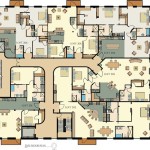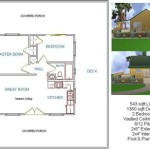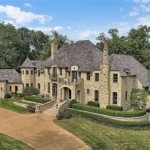Barn Plans With Living Quarters: Combining Rustic Charm and Modern Comfort
The concept of integrating living spaces within a barn structure has gained considerable traction in recent years, driven by a desire for unique living experiences and the potential for cost-effective housing solutions. Barn plans with living quarters offer a compelling alternative to conventional homes, blending the rustic appeal of traditional barns with the comfort and functionality of modern residential design. This article delves into the various aspects of these plans, examining their benefits, considerations, and potential applications.
These designs can range from simple loft apartments within an existing barn structure to elaborate, purpose-built structures that seamlessly incorporate agricultural or workshop space with spacious living areas. The versatility of barn plans with living quarters makes them suitable for a wide range of individuals, including hobby farmers, artisans, entrepreneurs, and those seeking a more sustainable and aesthetically pleasing lifestyle. The core idea revolves around maximizing the efficiency of space utilization while preserving the character and charm of the barn aesthetic.
The integration of living quarters within a barn structure presents a unique set of design challenges and opportunities. Careful consideration must be given to factors such as insulation, ventilation, plumbing, electrical systems, and structural integrity to ensure a comfortable and safe living environment. Furthermore, adherence to local building codes and regulations is paramount, particularly concerning fire safety and accessibility standards. The architectural style can vary significantly, ranging from traditional timber frame designs to modern steel-frame structures, each offering its own distinct advantages and aesthetic qualities.
Key Benefits of Barn Plans With Living Quarters
Several factors contribute to the increasing popularity of barn plans with living quarters. One primary advantage lies in their potential for cost savings. Utilizing existing barn structures, or incorporating simple designs, can significantly reduce construction costs compared to building a conventional home from the ground up. The adaptability of the design also allows for phased construction, enabling homeowners to spread out expenses over time. Another key benefit is the enhanced connection to nature. Barns often offer expansive views of the surrounding landscape and the opportunity to engage in outdoor activities. The integration of agricultural space also allows for the pursuit of hobbies such as gardening, animal husbandry, or woodworking, fostering a closer connection to the land. Finally, these plans often result in unique and character-rich living spaces that are aesthetically pleasing and offer a sense of individuality rarely found in mass-produced housing.
The potential for income generation is another significant advantage. A portion of the barn structure can be dedicated to a workshop, studio, or retail space, allowing homeowners to operate a business from their property. Alternatively, the living quarters can be rented out, providing a source of passive income. The flexibility of these plans makes them well-suited for entrepreneurs and those seeking to supplement their income.
Sustainability is another compelling factor. Repurposing existing barn structures promotes environmental conservation by reducing the demand for new building materials. The incorporation of sustainable design features, such as solar panels, rainwater harvesting systems, and energy-efficient appliances, can further minimize the environmental impact of the dwelling. Barns often provide ample space for installing these systems, making them an ideal choice for environmentally conscious homeowners.
Important Considerations Before Implementing Barn Plans
While barn plans with living quarters offer numerous benefits, careful planning and evaluation are essential before embarking on such a project. The first step is to assess the structural integrity of the existing barn, if applicable. A thorough inspection by a qualified engineer or contractor is crucial to identify any structural deficiencies that need to be addressed. Significant repairs or modifications may be required to ensure the safety and stability of the building. If the barn is significantly deteriorated, it may be more cost-effective to opt for a new construction project.
Compliance with building codes and regulations is another critical consideration. Local authorities typically have specific requirements for residential buildings, including fire safety standards, insulation requirements, and accessibility guidelines. It is essential to consult with local building officials to ensure that the proposed design meets all applicable regulations. Failure to comply with these regulations can result in costly delays and penalties.
Insulation and ventilation are paramount for creating a comfortable and energy-efficient living environment. Barns are often poorly insulated, making them susceptible to temperature fluctuations and drafts. Proper insulation techniques, such as spray foam insulation or rigid foam boards, can significantly improve the thermal performance of the building. Adequate ventilation is also essential to prevent moisture buildup and ensure good air quality. Consider installing exhaust fans in kitchens and bathrooms, as well as a whole-house ventilation system to circulate fresh air.
Water and septic systems are also important considerations. If the barn is not already connected to a municipal water and sewer system, a well and septic system will need to be installed. The size and capacity of these systems will depend on the number of residents and the intended water usage. Soil testing and percolation tests may be required to determine the suitability of the site for a septic system. Working with experienced professionals is crucial to ensure that these systems are properly designed and installed.
Design Elements and Structural Options
The design of barn plans with living quarters can be highly customized to reflect the individual preferences and lifestyle of the homeowners. Traditional timber frame designs offer a rustic and aesthetically pleasing look, while steel frame structures provide greater flexibility and strength. The layout of the living spaces can be tailored to accommodate various needs, such as open-concept living areas, private bedrooms, and dedicated home offices. The integration of natural light is also an important consideration. Large windows and skylights can bring ample sunlight into the building, creating a bright and airy atmosphere.
Flooring options can range from traditional hardwood floors to modern concrete or tile. The choice of flooring will depend on the desired aesthetic and the intended use of the space. For example, concrete floors are durable and easy to clean, making them suitable for workshops or garages. Hardwood floors offer a warm and inviting look, making them ideal for living areas and bedrooms.
Exterior finishes can also be customized to complement the surrounding landscape. Traditional barn siding, such as board and batten or shiplap, can be used to maintain the rustic look of the barn. Modern siding options, such as metal or fiber cement, offer greater durability and require less maintenance. The choice of roofing materials is also important for both aesthetics and functionality. Metal roofs are durable and long-lasting, while asphalt shingles are a more affordable option. The integration of landscaping features, such as gardens and patios, can further enhance the appeal of the property.
Consider the spatial relationship between the living quarters and the barn's original purpose, such as housing livestock or storing equipment. Strategically designed partitions can create a clear separation between the two areas, preventing odors and noise from seeping into the living space. A dedicated entrance for the living quarters can also enhance privacy and convenience.
The incorporation of green building practices is particularly well-suited to barn conversions. Utilizing reclaimed materials, such as salvaged wood and fixtures, not only reduces construction costs but also adds character and charm to the dwelling. Designing the structure to maximize passive solar gain can significantly reduce heating and cooling costs. Implementing water conservation measures, such as low-flow fixtures and rainwater harvesting, further minimizes the environmental footprint.

Horse Barns With Living Quarters Floor Plans

Horse Barns With Living Quarters Floor Plans

Barn Plans Horse Plan With Living Quarters 001b 0001 At Www Thegarageplan Com

Horse Barn Plans With Living Quarters Cad Pro

Barn Plans Horse Plan With Living Quarters 001b 0001 At Www Thegarageplan Com

Pin Page

Horse Barns With Living Quarters Floor Plans

Texan 01 Horse Barn With Living Quarters Floor Plans Dmax Design Group

Tour A Six Stall Barn With Luxurious Living Quarters Stable Style

8 Best Barndominium Plans With Living Quarters








